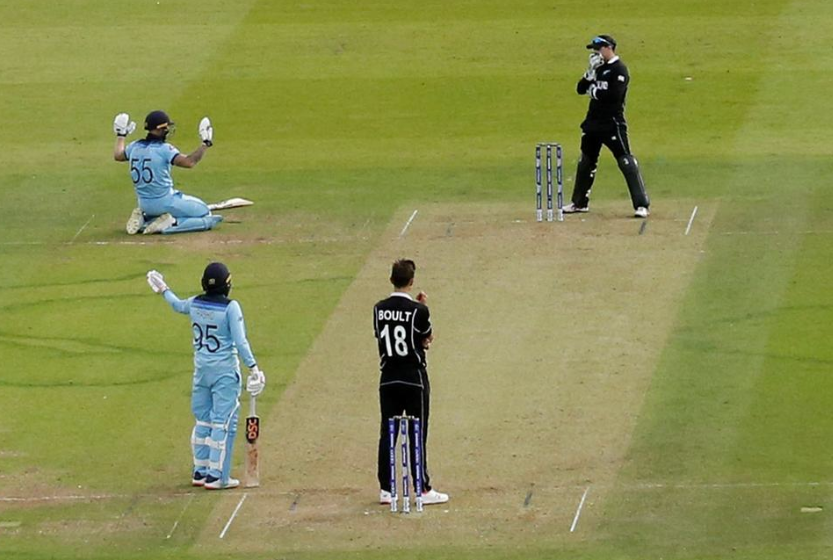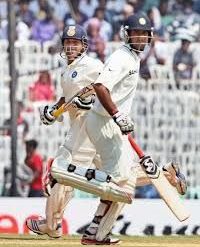Cricket is indeed an unpredictable game and the World Cup final match proved this beyond any doubt. Both, England and New Zealand, were on identical scores after the stipulated fifty overs. The super over failed to deliver a clear winner as both teams were again tied on fifteen runs. Then a rule came into force to decide the winner that took the game’s unpredictability and absurdity levels to a new high. The rule dictated that the team that had hit more boundaries will be the winner. Why only boundaries and not sixes or twos or singles – nobody knows. Is a four more significant than four singles since both add four to the total? A game’s purist may argue that four scoring shots in four balls implies better batting than possibly one scoring shot in four balls.
Logically if a team, in a given number of overs, scores the same number of runs as the opposing team and loses lesser number of wickets then it is deemed to have done better. At the end of a given number of overs it really does not matter if the runs came of singles or fours or sixes. What matters is the total number of runs scored and the number of wickets lost. ICC’s rule of declaring the winner based on number of fours hit and ignoring the wickets lost is downright absurd. In test cricket a team can only win if it takes twenty opposition wickets (ten in each innings). Unless that happens, no score is big enough to give it the tag of a winner.
In one day or T 20 cricket unpredictability scales new heights when uncles DUCKWORTH & LEWIS come into action. And believe me these uncles are as unpredictable as the game itself when they set revised targets in rain hit matches. For example, New Zealand team scored 239 for eight wickets in fifty overs in the semi-final against India but the unpredictable uncles predicted that India must score 143 runs in twenty overs if Indian innings was curtailed! Does this not defy logic and underscore the good work done by Indian bowlers?
For long a batsman was either a right-hand batsman or a left-hand batsman. But today with reverse sweep and switch hitting, a right-hand batsman becomes a left-handed batsman after the ball is bowled and vice versa. The hapless bowler just stands there and watches as he is hit to the fence. But the bowler has no such liberty, he still remains a right-arm or left-arm bowler. He cannot switch from one to the other as he enters his delivery stride. So, a batsman can be unpredictable but a bowler has no such choice.

In limited overs cricket any ball that is a few inches away from the leg stump is declared a wide unless the batsman either hits it or it touches his body. This is as absurd as it gets. In most cases the ball goes from under or over the bat as the batsman takes a mighty swipe. Does that not mean that the ball was well within a batsman’s reach? If he connects it is fine but if he misses the bowler and fielding side are penalised. The logic of a ball being declared wide only when it is genuinely out of reach of the batsman is turned on its head.
If a fielder on the boundary jumps from within the boundary rope and catches the ball in air but lands outside the rope then it is a six. However, if a fielder jumps from outside the boundary rope and catches the ball in air and lands inside the rope then the batsman is out. One would presume that if a player is outside the boundary line then he is not in the game for that ball at least. This logic is followed in limited overs when there is an extra player outside the thirty-yard circle and the bowler bowls a ball, the umpire immediately declares it a no ball. Even if the batsman gets out, he is declared not out. Mind you, in this case the player was at least within the playing field.
Another interesting case is the bat pad or pad bat when the ball jumps in the air and is caught by a fielder. In both instances the batsman is out. But when it comes to Leg Before Wicket (LBW), if the ball hits the bat first, then the pad and is headed straight to the wickets there is no question of being out LBW. But if it hits pad first and was heading towards stumps at the time of impact on pad, then the batsman is given out LBW. In either case if there was no leg in between then the ball would have hit the stumps so why the distinction? In case of LBW there is another absurdity in place. If the ball hits the pad outside the off-stump line then the batsman is not out even if the ball was hitting the stumps. Exception to this rule is where a batsman does not offer a shot and is given out. If a ball pitches outside off, hits the batsmen on pad within the line of stumps and is hitting stumps then he is out LBW whether or not he offers a shot. But when it comes to a ball pitching outside the leg stump, then LBW is totally out even if the ball hits the pad in line with stumps. Does this not defy sane logic? Why should it matter where the ball is pitched as long as it is hitting the stumps?
The decision review system is another absurd rule. If the umpire is in doubt in case of a run out, stumping or whether the catch was taken cleanly, he can ask for the third umpire to review and help him with the decision. But when an on-field umpire is certain and gives a decision, then the players can seek a review. Somewhere this does not seem right. Shouldn’t the review be left to the umpire in all cases? If third umpire is part of the game then why should he be used selectively?
Somewhere the game of cricket does not believe in the age-old adage of ‘seeing is believing’. If a batsman misses a delivery and the ball hits the stumps but the bails do not come off, the batsman is not out even if there is no doubt about the ball having hit the stumps. Same is true for run outs and stumpings. In today’s hi-tech stumps even if the LED glows, the batsman is still not out if the bails are not unseated. Is this not a case of ignoring what is so obviously seen? On the other hand, if a snicko meter gives a faint murmur even when in all probability the batsman has not nicked the ball, the umpire goes with the result of the snicko meter. So, in one instance the umpire sees and ignores, in the other he does not see but declares the batsman out.
But then cricket still remains a great game despite its unpredictability and absurdities. The game is a great leveller as this is one game that certainly lives up to the age old saying ‘every dog has its day’. Cricket lived up to its unpredictability tag in the recently concluded world cup too. The two teams that topped the league table were booted out of the finals and then England had its day against New Zealand because of some absurdities that came to the fore.
Saroj Chadha, an engineering professional, is a successful entrepreneur. Having retired from the Indian Army after having served for over 23 years, he has also been a consultant for leading Indian and Multinational electrical companies. He lives in New Delhi.


